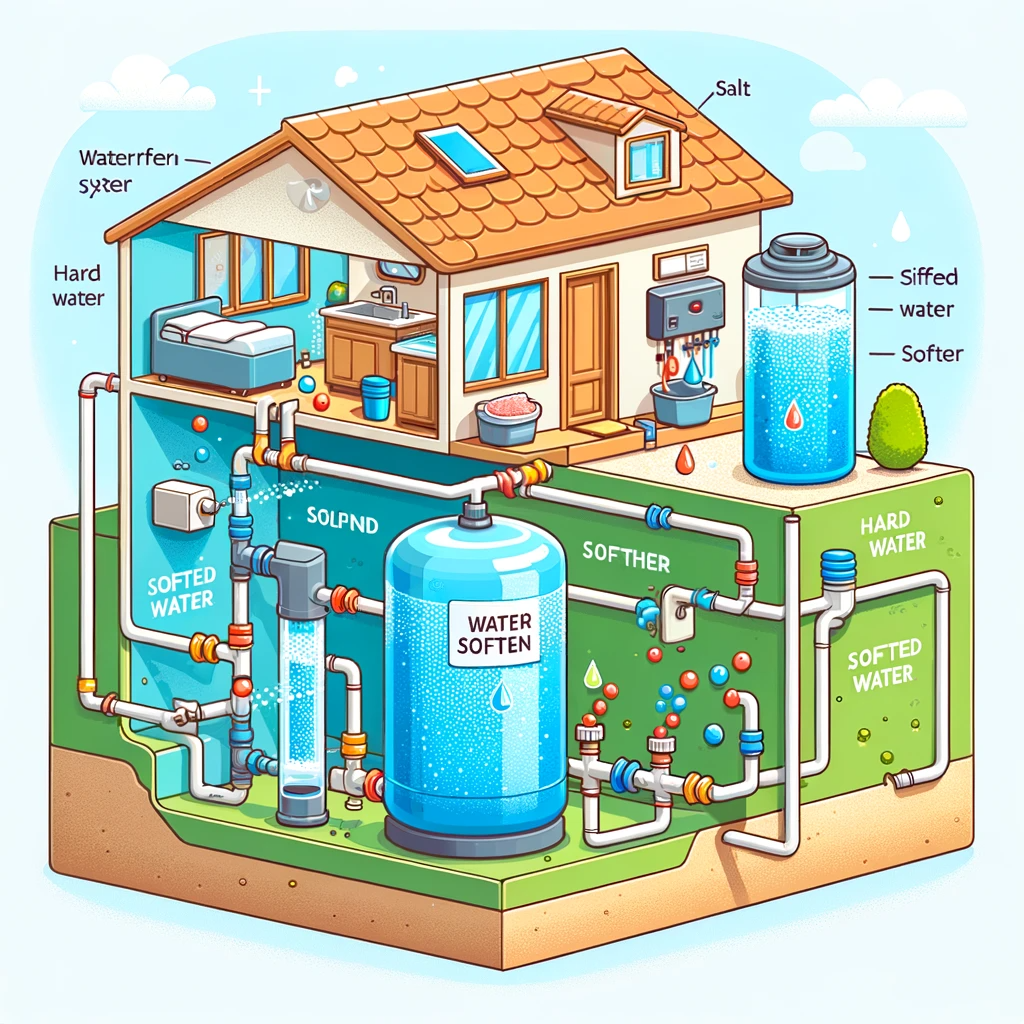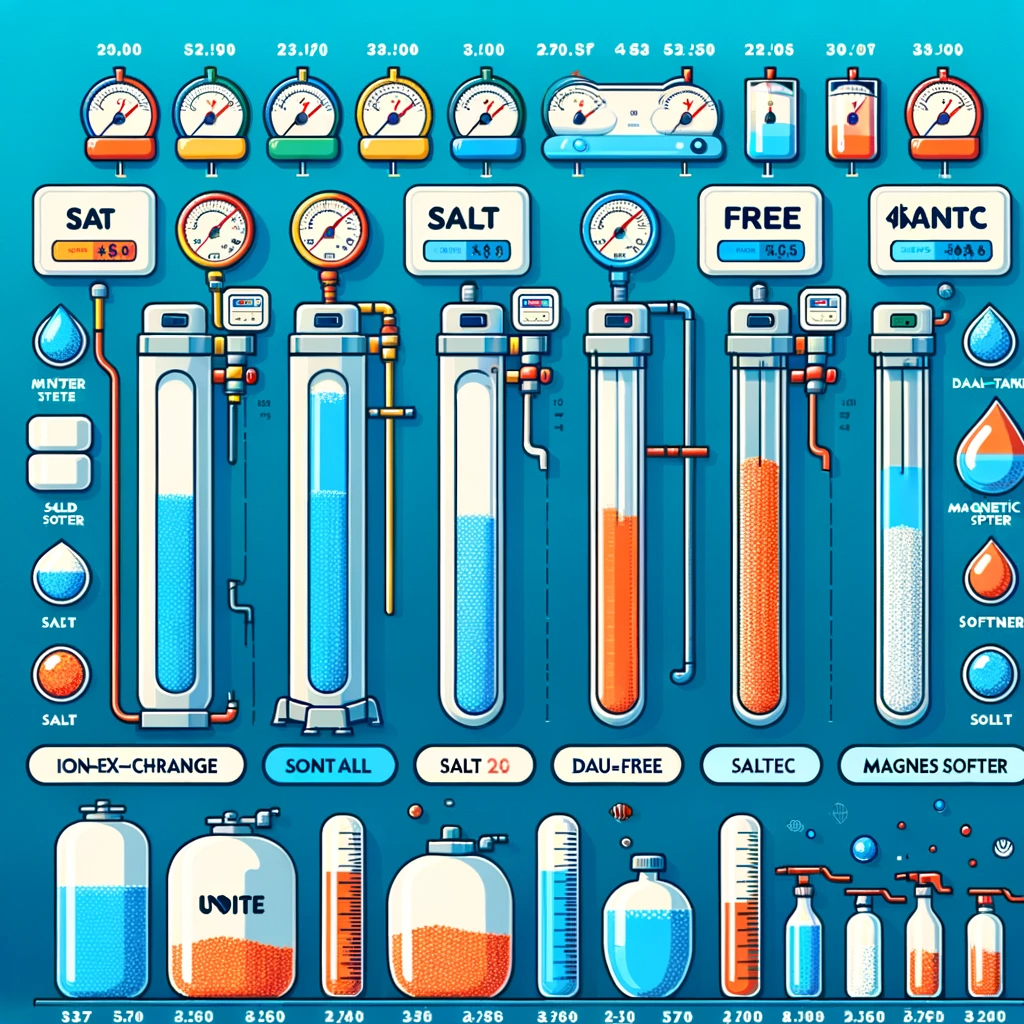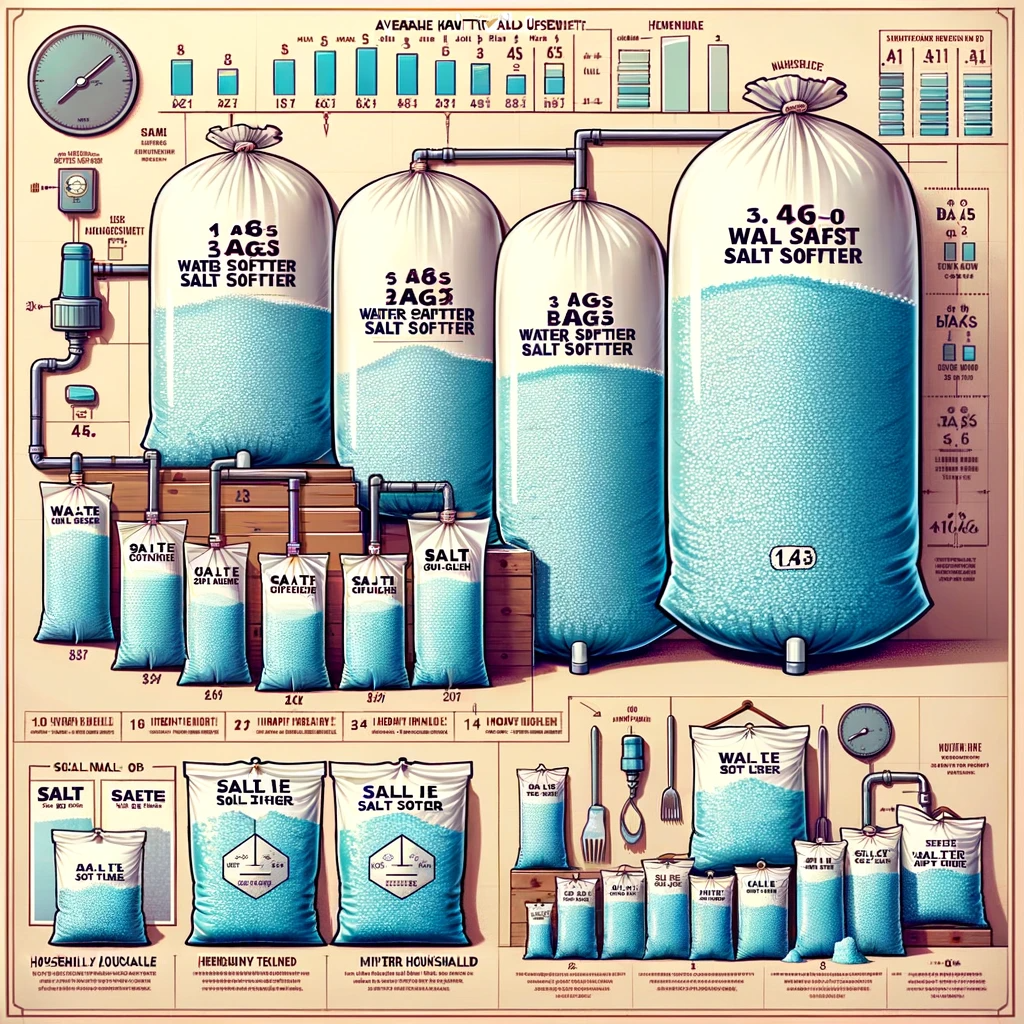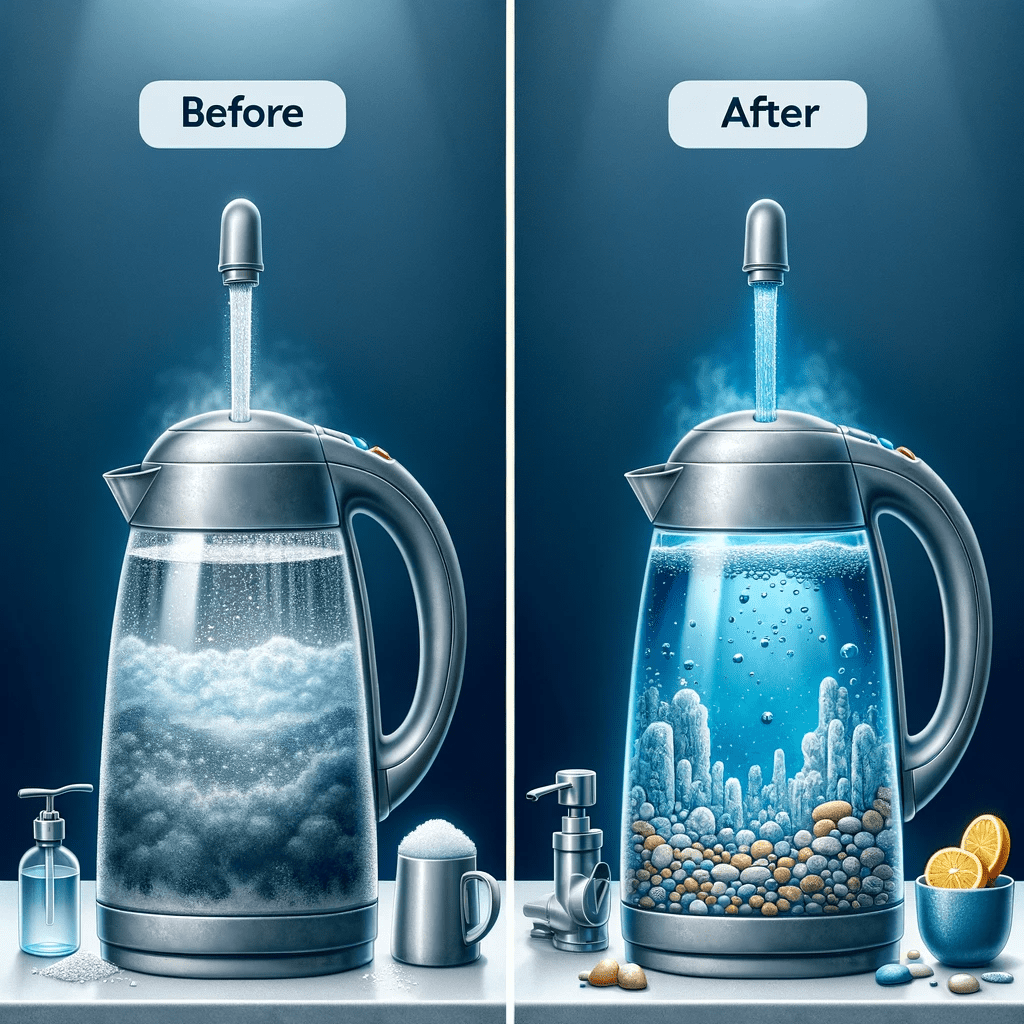For a water softener, the number of bags of salt needed depends on the capacity of the water softener and the hardness of the water. An average household with moderately hard water may require around 40 to 80 pounds of salt per month for a standard water softener.
However, it is recommended to consult the manufacturer’s guidelines for accurate dosing instructions as they can vary based on the specific model and water conditions. It is important to regularly monitor the salt levels and replenish as needed to ensure optimal performance of the water softener.
Determining The Right Amount Of Salt
When it comes to maintaining a water softener, determining the right amount of salt is crucial for its optimal performance. Proper salt usage ensures that the resin in the water softener can effectively remove the hard minerals from the water, providing you with soft water throughout your home. Here, we will explore considerations for choosing salt amounts and factors that affect salt usage.
Considerations For Choosing Salt Amounts
Choosing the appropriate amount of salt for your water softener requires a few considerations. Firstly, you need to consider the water hardness levels in your area. Hardness levels vary across different regions, so it’s important to know the specific hardness of your water. If you are unsure about the hardness of your water, you can get it tested by a water testing laboratory or by using at-home water hardness testing kits, readily available in the market.
Once you know the hardness level of your water, you can determine the amount of salt needed by referring to the manufacturer’s instructions for your water softener model. The instructions often provide guidelines for salt usage based on different water hardness levels.
Another factor to consider is the size and capacity of your water softener. Different models of water softeners have different capacities, usually expressed in grains or liters. The capacity determines how much water your softener can treat before regeneration is needed. Regeneration involves the use of salt to flush out the accumulated hardness minerals from the resin beads. By knowing the capacity of your water softener, you can determine the appropriate salt amount required for effective regeneration.

Factors That Affect Salt Usage
Several factors can impact the amount of salt your water softener uses, including household size, water consumption, and personal preferences. If you have a larger household with more people, you may need to increase the salt dosage to accommodate the higher demand for softened water.
Additionally, the amount of water your household consumes can influence salt usage. The more water that passes through the softener, the more salt will be needed for regeneration. It’s important to consider your daily water usage when determining the appropriate salt amount to ensure that your water softener can keep up with your household needs.
Lastly, personal preferences and water quality can also affect salt usage. Some people prefer their water to be extremely soft, while others may find that a lower level of softness is sufficient. Adjusting the salt amount can help achieve the desired level of softness based on individual preferences.
Calculating Salt Requirements
When it comes to maintaining a water softener, knowing how many bags of salt you need is essential. Calculating salt requirements involves three simple steps: determining the water hardness level, identifying salt efficiency, and calculating salt usage. By following these steps, you can ensure that your water softener operates effectively and efficiently.
Step 1: Determining Water Hardness Level
Calculating your salt requirements begins with determining your water’s hardness level. Water hardness is usually measured in grains per gallon (GPG). You can find this information on your water quality report or by using a water testing kit. Once you know the hardness level, you can move on to the next step.
Step 2: Identifying Salt Efficiency
The next step is to identify the salt efficiency of your water softener. Salt efficiency refers to the amount of salt required to remove a certain amount of hardness minerals from your water. Typically, water softeners have a salt efficiency rating ranging from 3,000 to 4,000 grains of hardness removed per pound of salt. You can find this information in your water softener’s user manual or by contacting the manufacturer.
Step 3: Calculating Salt Usage
Now that you know the hardness level and the salt efficiency of your water softener, you can calculate the salt usage. The formula is quite simple:
Salt Usage (in pounds) = Water Hardness (in GPG) / Salt Efficiency (in grains per pound)
For example, let’s say your water hardness level is 10 GPG and your water softener has a salt efficiency of 3,500 grains per pound. Using the formula above, you can calculate that you need approximately 2.86 pounds of salt for each regeneration cycle.
It’s important to note that this calculation gives you the amount of salt needed for one regeneration cycle. Depending on your water usage and the size of your water softener, you may need to regenerate more frequently. It’s a good idea to monitor your salt usage over time to ensure that you always have enough on hand.

Water softener salt types
Types of salt used in water softeners:
Rock Salt
Rock salt is a natural, unrefined salt mined from underground deposits. Typically, it contains impurities such as dirt and insoluble particles, which can lead to sediment buildup in the water softener. Although it is the most economical option, the brine tank may need to be cleaned more frequently.
Solar Salt
Solar salt is obtained through the evaporation of seawater or brine from salt lakes. It comes in two forms: crystals and pellets. Crystals dissolve more slowly and are suitable for less frequent water softener use. Pellets, on the other hand, dissolve quickly, making them ideal for regular usage.
Evaporated Salt
Evaporated salt is the purest form of salt for water softeners. Produced through a process of evaporation, it leaves behind all impurities, ensuring minimal maintenance of the water softener system. It is available as both pellets and cubes, offering efficient performance for various water softening needs.
Choosing The Right Salt Type
- Consider the level of impurities in your water and the softener’s cleaning requirements.
- For cost-effective softening, rock salt may be suitable for occasional maintenance and monitoring.
- For general use, solar salt crystals or pellets can provide effective results with minimal upkeep.
- If you prefer a low-maintenance option, evaporated salt, in either pellet or cube form, is the most efficient choice.
Calculating Bags Of Salt Needed
Are you wondering how many bags of salt you need for your water softener? This guide offers a simple calculation method to help you determine the right amount based on your water hardness level. Forget the guesswork and get your water softener working efficiently!
When it comes to maintaining a water softener, one of the key tasks is ensuring you have enough salt to keep it running efficiently. But how do you know how many bags of salt you need? In this blog post, we will explore two methods to help you calculate the number of bags of salt needed for your water softener. Whether you prefer using a salt calculator or doing a manual calculation, we have you covered!
Method 1: Using A Salt Calculator
Using a salt calculator can be a convenient and time-saving way to determine the number of bags of salt you require. These online tools typically ask for information regarding your water softener system, such as the capacity and the level of hardness in your water. By entering these details accurately, you can get an instant estimation of the number of bags of salt needed.
To use a salt calculator, you will need to gather the necessary information. Firstly, determine the capacity of your water softener, which is usually listed in terms of grains. This can typically be found in your softener’s user manual or by checking the label on the unit itself. Next, test the hardness level of your water using a water testing kit. This will provide you with a measurement in terms of grains per gallon (GPG).
| Parameter | Measurement |
|---|---|
| Water Softener Capacity | X grains |
| Water Hardness Level | Y GPG |
Once you have gathered this information, input it into a salt calculator of your choice. The calculator will analyze the data and provide you with an estimate of the number of bags of salt required. Remember, this estimation is based on average usage and may vary depending on your household’s water consumption and water hardness changes over time.
Method 2: Manual Calculation
If you prefer a more hands-on approach, you can manually calculate the number of bags of salt needed for your water softener. Although this method requires a bit more effort, it can be useful if you want to have a deeper understanding of your specific water softener system.
Determine your water softener’s capacity
Find the capacity of your water softener, usually measured in grains, from your softener’s manual or by checking the label on the unit itself.
Test your water’s hardness level
Use a water testing kit to determine the hardness level of your water, measured in grains per gallon (GPG).
Calculate the salt dosage
Now that you have the capacity and hardness level, you can calculate the salt dosage by multiplying the capacity with the hardness level. For example, if your water softener has a capacity of 30,000 grains and the hardness level is 10 GPG, the salt dosage would be 30,000 x 10 = 300,000 grains.
Convert to bags of salt
Finally, convert the calculated grains of salt to the number of bags needed. Since most bags of salt come in 40-pound increments, divide the salt dosage by 40 to determine the number of bags required. Following the previous example, 300,000 grains / 40 = 7.5 bags (round up to 8 bags).
By employing either method, you can accurately determine the number of bags of salt required for your water softener, ensuring it continues to work effectively and efficiently.

Maintaining Optimal Salt Levels
When it comes to keeping your water softener running efficiently, maintaining the optimal salt levels is crucial. The right amount of salt ensures that your water softener can effectively remove minerals like calcium and magnesium from your water, preventing buildup and prolonging the lifespan of your appliance. In this section, we will discuss two key aspects of maintaining optimal salt levels for your water softener: regular salt level checks and refilling salt as needed.
Regular Salt Level Checks
Regularly checking the salt levels in your water softener is a simple yet important task. By doing this, you can ensure that your softener has enough salt to operate effectively and avoid any disruptions in providing you with softened water. Here are a few steps to help you perform the necessary salt level checks:
- Locate the salt tank of your water softener.
- Remove the lid or access cover of the salt tank.
- Take a look inside the tank to assess the salt level.
- If the salt level appears to be below the recommended level, it’s time for a refill.
Refilling Salt As Needed
Refilling the salt in your water softener is a crucial step in maintaining optimal salt levels. When the salt level reaches a certain point, it’s time to add more salt to the tank. Follow these simple guidelines to ensure a smooth refill process:
- Purchase the appropriate type of salt for your water softener. Common options include solar salt, pellet salt, and evaporated salt.
- Refer to your water softener’s manual for specific instructions on how to add salt. Some models have a designated brine well where salt should be poured, while others require direct pouring into the salt tank.
- Pour the salt carefully into the designated area, taking care not to overfill or spill any salt.
- Once the refill is complete, close the lid or access the cover of the salt tank securely.
By regularly checking your salt levels and refilling as needed, you can ensure that your water softener continues to perform at its best, providing you with the softened water you need. It’s important to note that the frequency of salt refills will vary depending on the size and efficiency of your water softener, as well as the hardness of your water. Monitoring your salt levels will help you determine the ideal refill schedule for maintaining optimal salt levels and enjoying the benefits of softened water.
Effects Of Under-salt And Over-salt
Proper salt usage is crucial for a water softener’s effectiveness. Under-salting can lead to hard water problems while over-salting can result in wasted salt and increased maintenance requirements. It is important to find the right balance to ensure optimal performance.
Effects of Under-Salt and Over-Salt Under-Salt Issues When the water softener has inadequate salt, it could lead to certain issues.
1. Reduced Efficiency: The resin beads in the softener may not regenerate fully, leading to hard water slipping through.
2. Mineral Build-Up: Without enough salt, mineral build-up in the tank can occur, reducing the lifespan of the water softener.
3. Water Spots: Under-salted water may result in the presence of water spots on dishes and plumbing fixtures.
Over-Salt Issues Conversely, if the water softener has too much salt, there are potential problems to consider.
1. Salt Bridge: Excessive salt can cause a salt bridge to form, preventing the salt from mixing with water and ultimately hindering the softening process.
2. Resin Bead Damage: Excessive salt levels can cause damage to the resin beads, affecting their ability to soften the water effectively.
3. Salty Water: Over-salting may result in a salty taste in the water, making it less palatable for consumption. It’s crucial to find the right balance when adding salt to your water softener, as both under-salting and over-salting can adversely affect the performance and lifespan of the system.

Tips For Proper Salt Management
Proper salt management for water softeners is crucial for effective performance. Calculate the appropriate amount of salt needed by considering the capacity of the water softener and the hardness of the water. Generally, one bag of salt is sufficient for a standard water softener, but it’s essential to monitor and adjust as needed.
Managing salt for your water softener is essential for ensuring its effectiveness and longevity. By following these simple tips, you can optimize your salt management and keep your water softener running smoothly. Let’s take a closer look at three important aspects of salt management: storing salt properly, managing salt delivery, and avoiding salt bridging.
Storing Salt Properly
Proper storage of salt is crucial for maintaining its quality and preventing the formation of lumps or clumps. Here’s what you need to know:
- Store salt in a dry and cool area to prevent moisture from affecting its performance.
- Avoid exposure to extreme temperatures, as this can cause the salt to clump together.
- Consider using airtight containers or bags to protect the salt from moisture and humidity.
- Keep the storage area clean and free from any potential contaminants that may compromise the quality of the salt.
Managing Salt Delivery
Efficient salt delivery is crucial for maintaining your water softener’s effectiveness and avoiding any interruptions in the softening process. Here are some tips to help you manage salt delivery effectively:
- Regularly monitor the salt level in your water softener to ensure it doesn’t run out.
- Refill the salt tank when it reaches about half of its capacity to ensure a continuous supply.
- Consider setting reminders or using automatic salt delivery services to ensure you never run out of salt.
- Choose the right type of salt for your water softener, whether it’s rock salt, solar salt, or evaporated salt, based on the manufacturer’s recommendations.
Avoiding Salt Bridging
Salt bridging is a phenomenon where a hard layer of salt forms above the water level in the salt tank, preventing the proper regeneration process. Follow these steps to avoid salt bridging:
- Periodically check for salt bridges by tapping the side of the tank with a broom handle or a similar tool.
- If a salt bridge is detected, carefully break it up using a long object to ensure the salt level reaches the water.
- Consider using special salt designed to reduce the risk of salt bridging.
- Regularly clean the salt tank to remove any accumulated debris or residue that could contribute to salt bridging.
By implementing these tips for proper salt management, you can ensure the efficient operation of your water softener and enjoy the benefits of softened water for years to come.
One common FAQ about salt usage is how many bags are needed for a water softener. The amount of salt required varies depending on the size and type of the water softener system, so it is best to refer to the manufacturer’s instructions for the specific model.
Troubleshooting Salt-related Problems
Ensuring that the right amount of salt is added to water softeners is crucial to maintaining optimal performance. However, there are some common salt-related problems that users may encounter when using a water softener. Troubleshooting these issues is important to ensure that the system functions efficiently and effectively.
Salt Bridges In The Brine Tank
Salt bridges can form in the brine tank, creating a space between the salt and the water. This prevents the salt from dissolving properly and can lead to insufficient regeneration of the resin beads. To troubleshoot this issue, carefully break up the salt bridge using a long-handled tool to allow the salt to come into contact with the water. Regularly breaking up any formed salt bridges can prevent this problem from reoccurring.
Salt Not Dissolving Properly
When salt does not dissolve properly in the water softener, it can lead to inadequate ion exchange and result in hard water. This can be caused by the use of the wrong type of salt, such as rock salt or ice melt, which may contain impurities that hinder dissolving. To address this problem, ensure that you are using high-quality water softener salt specifically designed for use in the system. Additionally, check for any salt buildup and clean the brine tank regularly to prevent this issue.
Issues With Salt Regeneration
Problems with salt regeneration can lead to inadequate softening of the water. If the salt does not properly dissolve or if the brine tank does not refill with water during the regeneration process, it can result in hard water. Check the salt dosage setting, water level in the brine tank, and the functioning of the control valve to troubleshoot regeneration issues. Proper maintenance and adjustment of these factors can help resolve the problem and ensure effective salt regeneration.
Frequently Asked Questions Of How Many Bags Of Salt For A Water Softener
How Often Should You Add Salt To A Water Softener?
You should add salt to your water softener at least once a month or when the salt level is low.
How Do You Know When To Add More Salt To A Water Softener?
Check the salt level in your water softener tank regularly. When it’s below the half-full mark, it’s time to add more salt.
What Type Of Salt Should I Use In My Water Softener?
You should use salt specifically made for water softeners such as evaporated, pellet, or solar salt. Avoid using rock salt or table salt.
How Much Salt Should I Add To My Water Softener?
The amount of salt to add depends on the size of your water softener. Generally, it’s recommended to add 1-2 bags of salt.
Can I Use Too Much Salt In My Water Softener?
Using too much salt can affect the efficiency of your water softener and may cause salt bridges or salt mushing. Follow manufacturer guidelines for optimal usage.
Conclusion
In sum, determining the right amount of salt for your water softener is crucial. By following the manufacturer’s guidelines and considering your household’s water usage, you can ensure optimal performance. Remember to monitor the salt level and replenish it as needed to enjoy the benefits of soft water in your home.


Leave a Reply